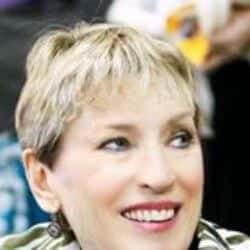


Home » Judging the Rottweiler

This article was originally published in Showsight Magazine, August 2014 issue.
The Rottweiler is an athletic breed that is compact and well-muscled, giving the appearance of being capable of trotting in a field all day long. Rottweilers are used for driving cattle, being a utilitarian farm dog, pulling a cart, search and rescue, and is a loyal family pet and protector. The Rottweiler should appear powerful and robust. With this in mind, we will look at this breed more closely.
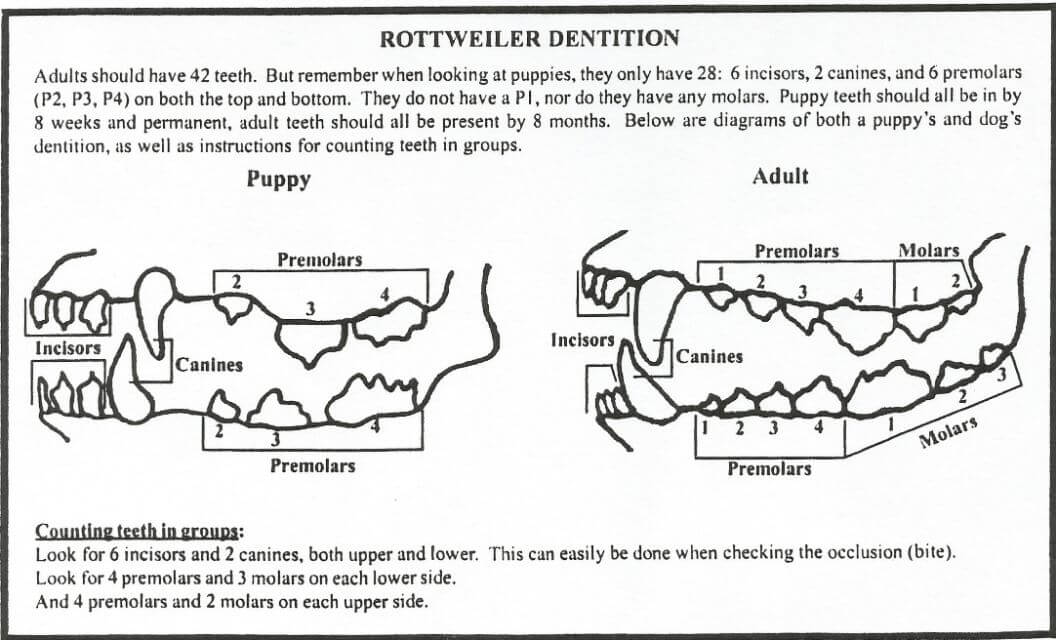
Proportion
The ideal Rottweiler proportion is 9 to 10. When viewed by the human eye, this will look square. The Rottweiler will appear square when standing, and the small degree of length may be observed when the dog is moving. When the dog is moving, you should be able to observe the power and strength of this breed in a balanced trot. This is not an extended trotting breed and is best observed at a ‘moderate’ pace. They are built for endurance, not short fast bursts of speed. This breed should not look ‘long in body’ or ‘short on leg’. Be aware of the proper proportions as it affects the overall impression of power and strength.
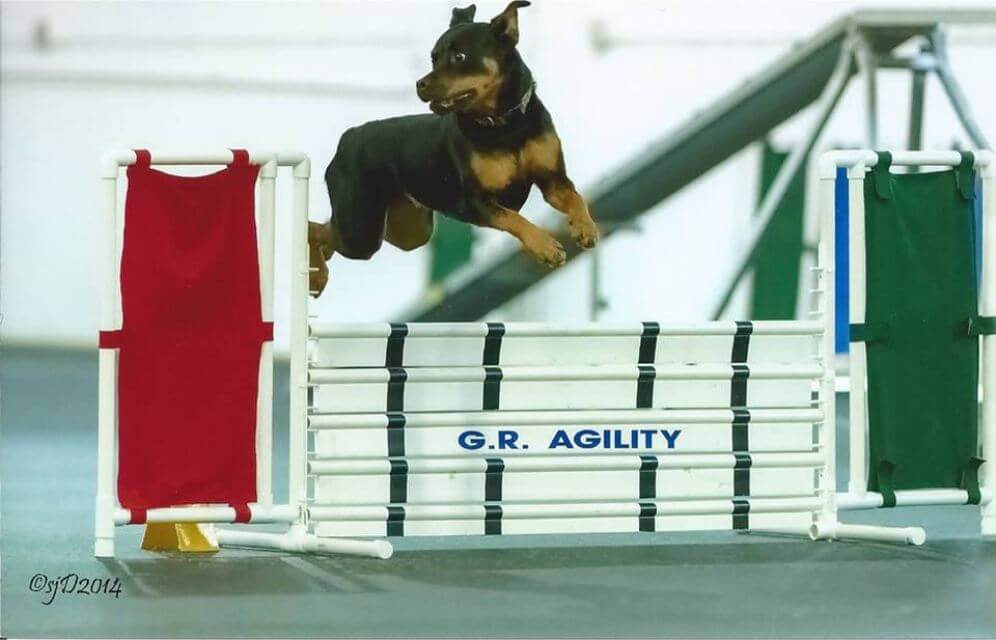
Balance and Movement
A Rottweiler needs to be balanced front and rear. They should not be straight in the front shoulders and upper arm, nor have extreme angulation in the rear. This would create a dog that would tire easily and have difficulty extending the rear hock for good rear drive. A balance of front and rear angles helps give the endurance needed for this working dog and to maintain a strong, level topline and produce an ‘effortless’ trot. To complete the package to sustain endurance and good movement, the Rottweiler needs round, compact feet with well-arched toes.
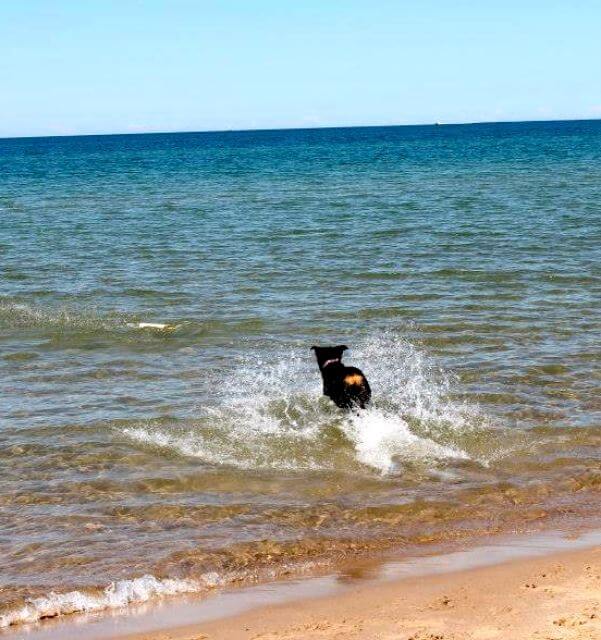
Head
While the head is important in this breed for specific breed characteristics, the movement and structure are equally important Rottweiler breed type features. Ideally, the proportion of the head is a ratio of 3 to 2 in the back skull to the muzzle. The zygomatic arch (The part of the temporal bone of the skull that forms the prominence of the cheek) and stop are well-developed, and the muzzle is broad at the base, with a slight tapering to the end of the muzzle. The underjaw is also strong with a well-developed chin. The eyes are almond-shaped and dark. The ears are medium, level with the top of the head, and the inner ear lies tightly to the skull. When erect, this set gives the head a broader appearance. The head should be in proportion to the body and bone of the whole dog.
Examining the Rottweiler
The AKC Standard describes the Rottweiler as a somewhat aloof breed, which doesn’t make indiscriminate friendships. An aloof or reserved Rottweiler is not to be penalized. With that in mind, the examination of this breed should be light-handed. The Rottweiler does not need to be ‘massaged,’ leaned on, poked, or prodded. Breed type and structure are easily evaluated through movement, muscle tone, and athletic presence. The examination is useful to check for disqualifying faults, testicles, and cosmetic details such as eye color, markings, and expression. It is often easier to examine the bite first in the individual examination, as the window of tolerance in this breed can narrow the longer one spends examining them. Examine the dog by looking at the head and expression, check the bite and then, while keeping a hand on the dog (perhaps on the head or shoulders), run the other hand down the dog and check testicles on the males. Always look over the top of the dog to make sure there is good substance and spring of rib.
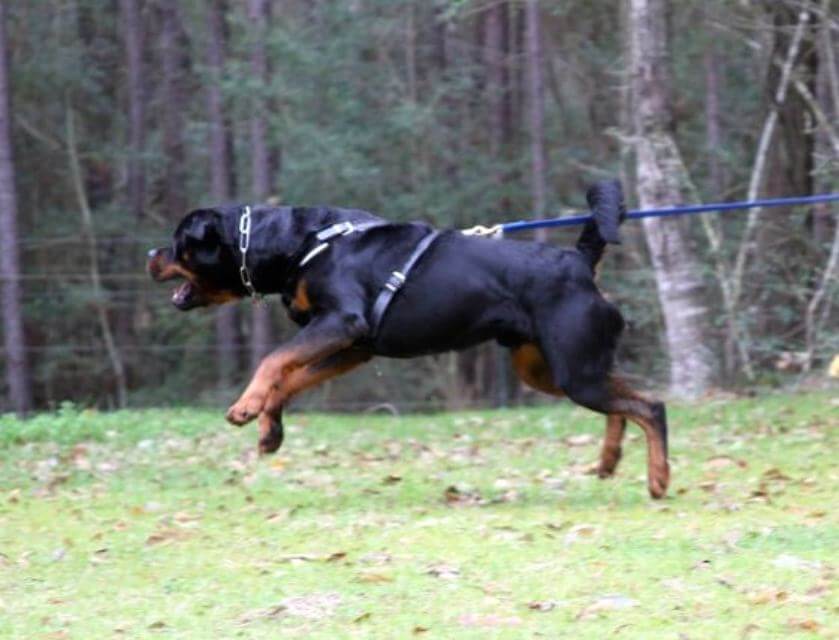
Examining the Bite
The standard has disqualifying faults for more than one missing tooth, and for overshot, undershot, or wry bites. Level bites and one missing tooth are serious faults. It is important for this breed to have proper dentition, as it is thought this helps maintain the breed-specific head proportion and to maintain the width of the muzzle and under jaw. This includes 42 teeth, 20 upper and 22 lower. It is fine to ask the handler to show the bite. It is preferred to allow the handler to show the bite. The examination first involves checking the front (incisors) to see if the bite is a scissors bite. Check to make sure there are six incisors on the top and bottom. Next, the handler lifts the side lips on each side to show the premolars and molars. Last, the handler will open the mouth so the judge can see the small M3 molars in the very back on the bottom.
The most common missing teeth are the P1 (right behind the canines), the M3 (smallest tooth in the very back on the bottom jaw), or an incisor. Other missing teeth will usually show an obvious ‘gap’ in the dog’s mouth. If you are unsure of what you have seen, please ask the handler to show you that specific area again rather than try to poke or feel for yourself. If you look at the tooth chart, you will see that you can look at the teeth by ‘groups.’ This would be first the incisors, next the premolars, then the molars, and lastly the M3’s. This may seem complex, but it is a fairly quick and easy process when you know specific tooth placement by their groups, and those that are most commonly found absent.
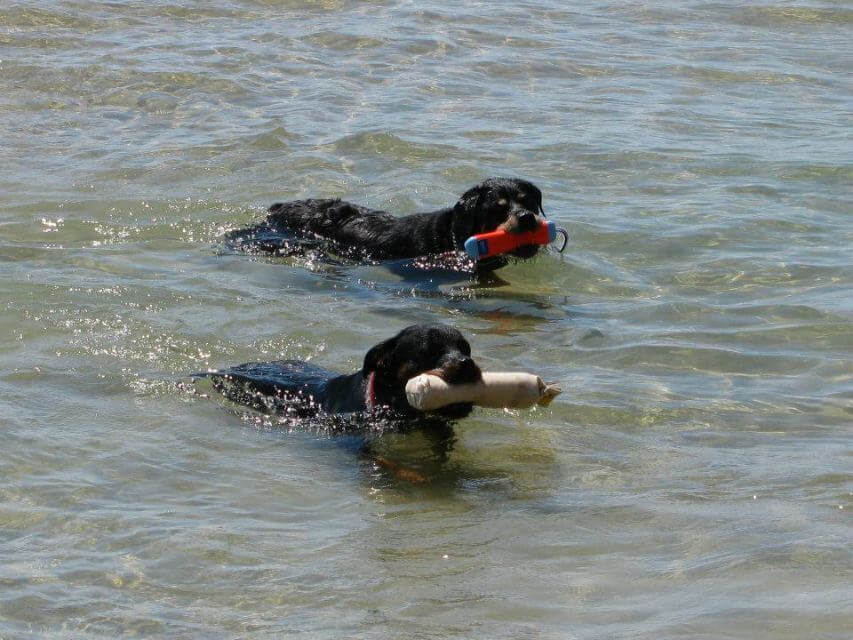
Judging for breed type consists of evaluating both movement and breed-specific characteristics. The Rottweiler is an athletic, powerful, and compact breed that needs to possess strong, balanced movement along with specific breed type. It is important to find dogs that have good balance and strong, sound movement, and then select from those who possess the best breed characteristics that make the Rottweiler unique.
